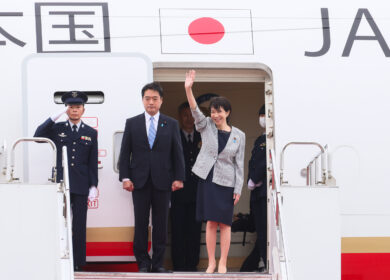Two PRCA talk sessions looked at ways multinationals can become more nuanced in their approach to a region more complex than many imagine.
Despite Asia-Pacific’s enduring status as a global driver of economic growth, multinationals continue to misunderstand the region, often by a wide margin. Two sessions hosted by the Public Relations and Communications Association (PRCA) in October, which I moderated, highlighted the challenges communications professionals face and proposed some ways to think differently about this highly diverse part of the world.

Why it’s so hard for multinationals to get a grip on Asia-Pacific
The biggest reason, according to our panelists, is the persistent belief — or is that hope? — that Asia-Pacific is somehow homogenous: that a piece of work created for Australia will also resonate with audiences in China, India or Japan. And that English-language content will work everywhere. In a region with around 2,300 languages, that seems wishful thinking indeed.
Then there is still the sense that Asia should be cheap. “That might have been the case 10 years ago,” said Siew Ting Foo, who has held global and regional chief marketing officer roles at HP, Diageo, Mars and Unilever. Nonetheless, the resilience of this myth means that securing a realistic budget can be difficult for communications representatives based in the region.
“I see it from both sides,” said Stephen Smith, PR Lead at Miro. “In my agency days, one of the hardest lessons was to say no and push back [if the budget was too low]. Overpromising and under-delivering always leads to one thing, and that is the agency being fired.” In his in-house role, he tries to be pragmatic: “If what I’m suggesting [as a budget] is unrealistic, tell me what it’s going to cost to get the job done.”
At the other end of the spectrum is the sense that Asia is fiendishly difficult to crack, with each market requiring unique iterations of a product. This is similarly misguided. As Dickson Seow, an international communications consultant who has held senior roles at Apple, Discord, Google, PayPal and Twitter pointed out, “you can have a common product offering in all markets and still be able to position your product in culturally relevant ways to tell your local story in each market”. A further consideration is how you distribute it, bearing in mind that virtually every market has its own version of the global social media platforms we are all familiar with.
This calls for people on the ground, whether in-house or agency, who are at one with the culture and stakeholders and can guard against lazy stereotyping. And of course enough trust in their ability to understand the market better than you do. “Local relationships have been the key thing that has helped us understand cultural nuances, how entities interact and how to be respectful,” said Amy Freeland, Vice President of Marketing and Communication at OceanX, a nonprofit ocean exploration initiative that is a Hoffman Agency client.
A further oddity that sometimes surfaces is the perception that corporate values matter less in Asia. Arun Sudhaman, formerly Editor-in-Chief of PRovoke Media, pointed to an airline that recently ran an advertising campaign in Asia that had been banned in Europe for greenwashing; and to sporting organizations that express support for free speech and human rights but put those concerns aside in certain markets. “Asia needs local understanding, but it should not be at the expense of best practice,” he said.
How an organization can maintain global identity while resonating locally
Adapting communications to local market realities is important, but upholding global brand identity is equally so. “It can be a constant struggle between headquarters and local subsidiaries,” said Aline Anliker, a strategic communications and marketing consultant based in Singapore. Her advice is to stay on top of locally relevant conversations and industry trends and use the established brand voice as a foundation with “flexibility in terms of topics and tone”. Foo calls this type of approach “global brand, local soul”.
For Seow, a company should look to tell human interest stories in local markets while being aware of two unchangeable factors: what the brand stands for and why people should use it. “While the core messages will be the same, the magic comes in the local storytelling with user voices and human-interest stories that advocate for your brand,” he advised, adding that local data is vital to support the approach. “A global research finding doesn’t mean anything to your local audience, for example in India, you need to provide the country-specific data which reflects the local trend in each market.”
This is true when it comes to creating thought-leadership content too. “Having that flexibility to access local data means you can create stories that are impactful for local audiences,” said Lillian Lee, Director of Marketing for Asia-Pacific and Middle East at Heidrick & Struggles (also a Hoffman client). “If you have the flexibility to do a local narrative, definitely do so, but you have to have a local spokesperson to push out the story. Then it can become a successful local campaign which is part of a global effort.”
Overcoming the “trust deficit” and embracing cultural learning
When it comes to engaging the media in an unfamiliar market, two elements are often at play. One is a sense of local pride, and the other is a sense of suspicion. “The local media are citizens who are proud of their country,” said Seow. “Humility goes a long way […] I’d also say that in some markets, as a foreign company, you start off with a trust deficit. The local media don’t know you, and if you have local companies that you are competing with, you have to be sensitive that some media will be trying to find stories that are negative about your company or brand. An important part of our job is to tell our side of the story and build trust with the local media to balance out their perception of your company.”
One approach is to invest in building rapport with the media before introducing any products or services to the market. In Japan, Miro’s Smith appreciates the importance placed on in-person meetings between journalists and communications representatives, and the relative willingness to attend press conferences. “As long as you’ve got a good story, people will come out and hear what you’ve got to say.”
Of course, the resulting coverage may not always be positive. But the key is to avoid seeming like an aspiring conqueror and instead highlight how you intend to bring value to customers and contribute to the country’s success.
In the end, Asia-Pacific’s diversity means there is no single “right way” to approach it — apart from acknowledging that diversity, keeping an open mind, and being realistic about the investment required for success. Sudhaman summed it up well when he said it’s a case of finding a way to like being uncomfortable.
“Learning about cultures makes you a better person, more empathetic, understanding and sensitive. It should make people better communicators. You have to enjoy trying to navigate and figure out why people move differently. We fear difference, but people want to tell you their stories so ask, listen and learn.”
To learn more about how we help tech and B2B brands tackle the complexities of marketing communications in APAC, get in touch at [email protected].

